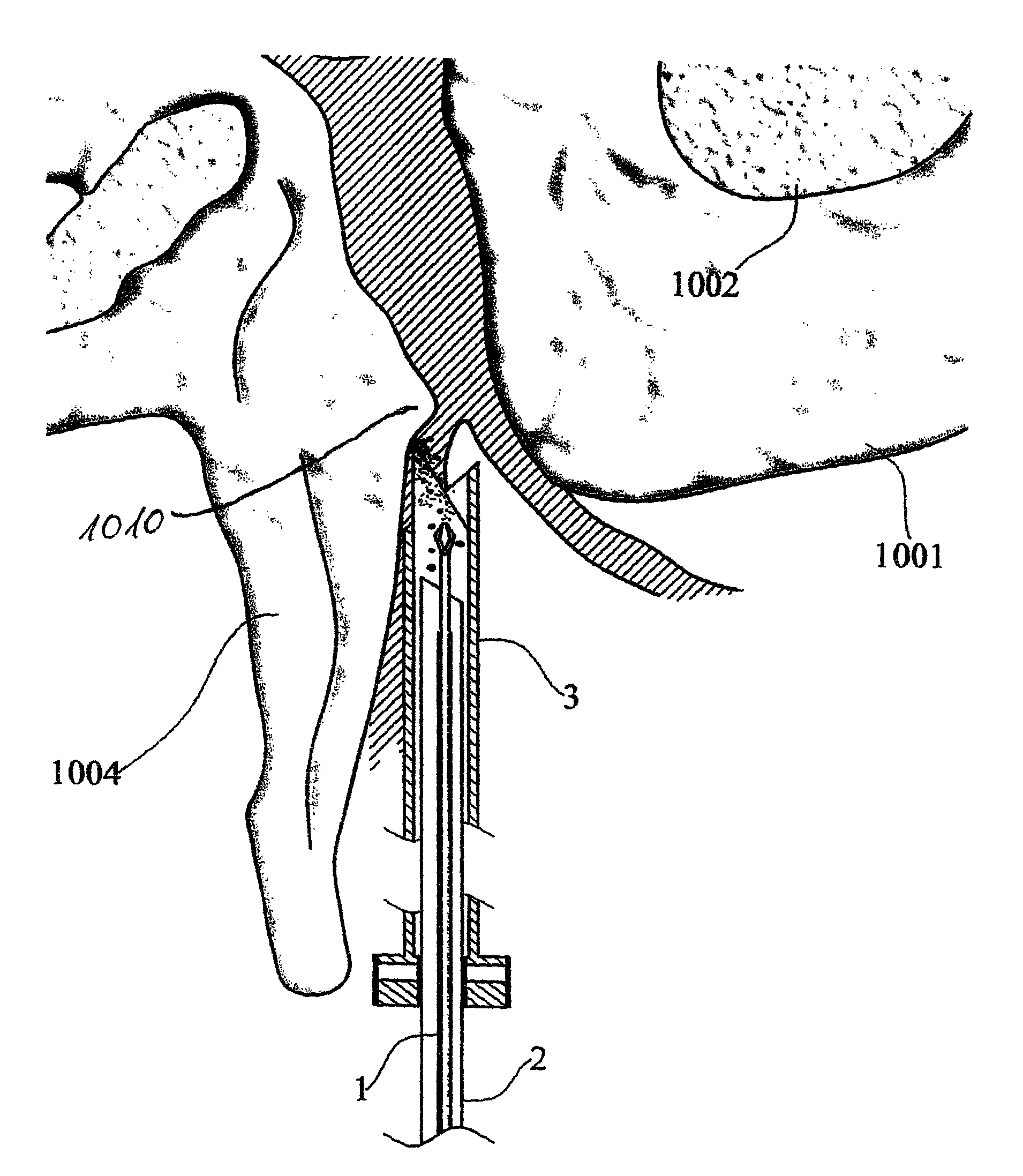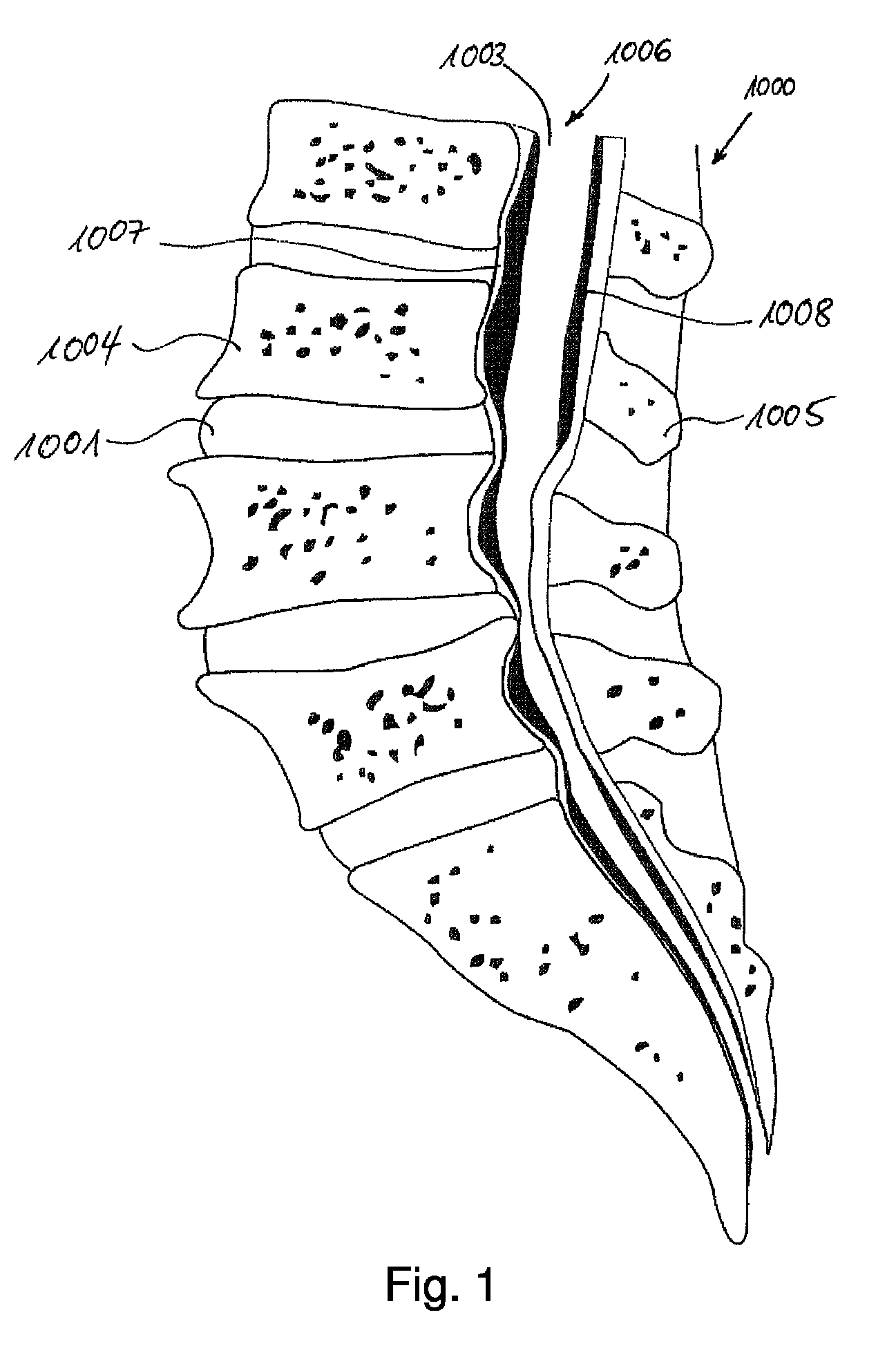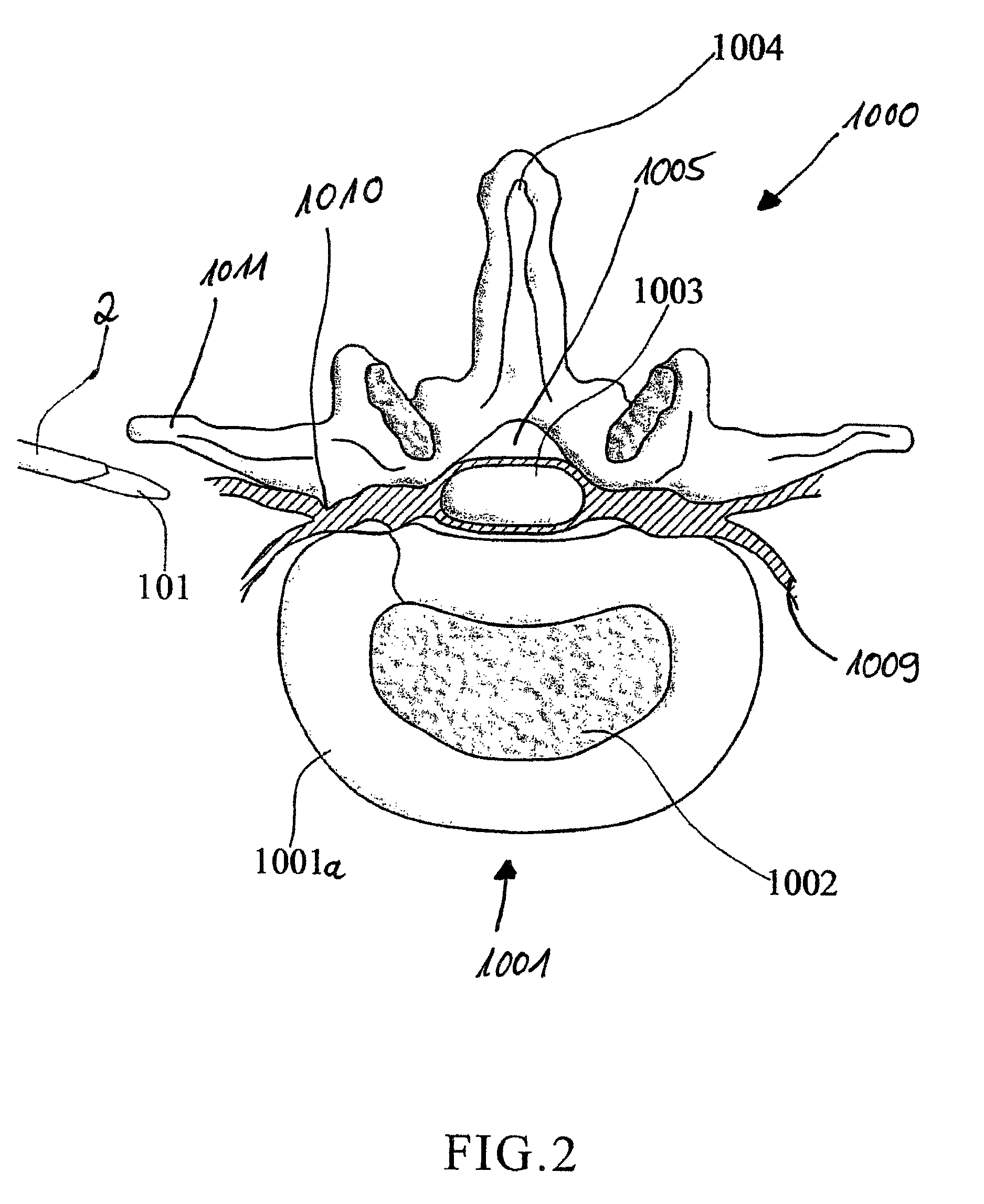Device and method for minimally invasive spinal intervention
a spinal cord and endoscope technology, applied in the field of endoscope devices for minimally invasive spinal cord intervention, can solve the problems of inconvenient removal process, inability to remove bone tissue at the same time, and the tool has to have a very small diameter, so as to reduce the risk of nerve damage or nerve damage to tissue which should not be damaged or eliminated.
- Summary
- Abstract
- Description
- Claims
- Application Information
AI Technical Summary
Benefits of technology
Problems solved by technology
Method used
Image
Examples
Embodiment Construction
[0049]Referring to the drawings in particular, FIG. 1 shows in longitudinal section the lower area of a spinal column 1000 with vertebrae 1004 and the spinous process (Processus spinosus) 1005 extending backwards (dorsally) away therefrom, between which—in the cross-section shown—are located the vertebral holes (vertebral foramen) forming the spinal canal 1006 of the spinal column 1000. Between the vertebrae 1004 there are located the intervertebral discs 1001 with their nucleus 1002 (FIG. 2) and their ring (annulus) 1001a.
[0050]The vertebrae are connected together at the front (ventral) side of the spinal canal by the anterior longitudinal ligament 1007 (Ligamentum longitudinale anterius), while the posterior longitudinal ligament (Ligamentum longitudinale posterius) 1008 is located to the rear of the spinal canal 1006, in front of the spinous processes 1005, the posterior longitudinal ligament being connected only loosely to the vertebrae but firmly to the discs 1001. Nerve tissu...
PUM
 Login to View More
Login to View More Abstract
Description
Claims
Application Information
 Login to View More
Login to View More - R&D
- Intellectual Property
- Life Sciences
- Materials
- Tech Scout
- Unparalleled Data Quality
- Higher Quality Content
- 60% Fewer Hallucinations
Browse by: Latest US Patents, China's latest patents, Technical Efficacy Thesaurus, Application Domain, Technology Topic, Popular Technical Reports.
© 2025 PatSnap. All rights reserved.Legal|Privacy policy|Modern Slavery Act Transparency Statement|Sitemap|About US| Contact US: help@patsnap.com



